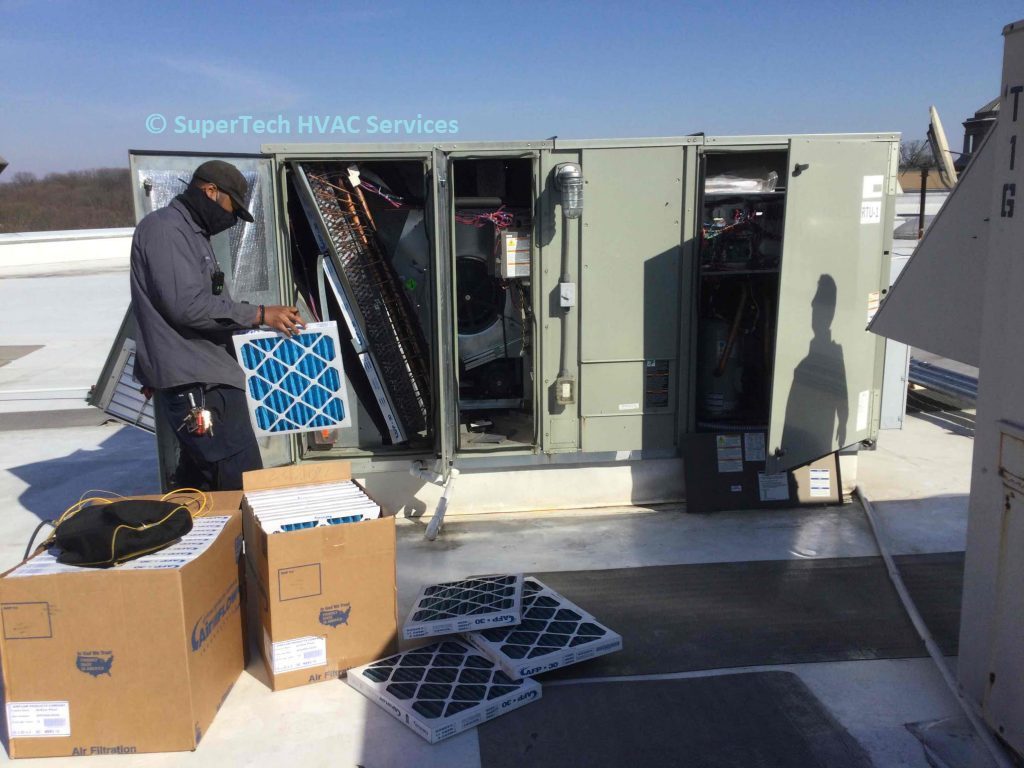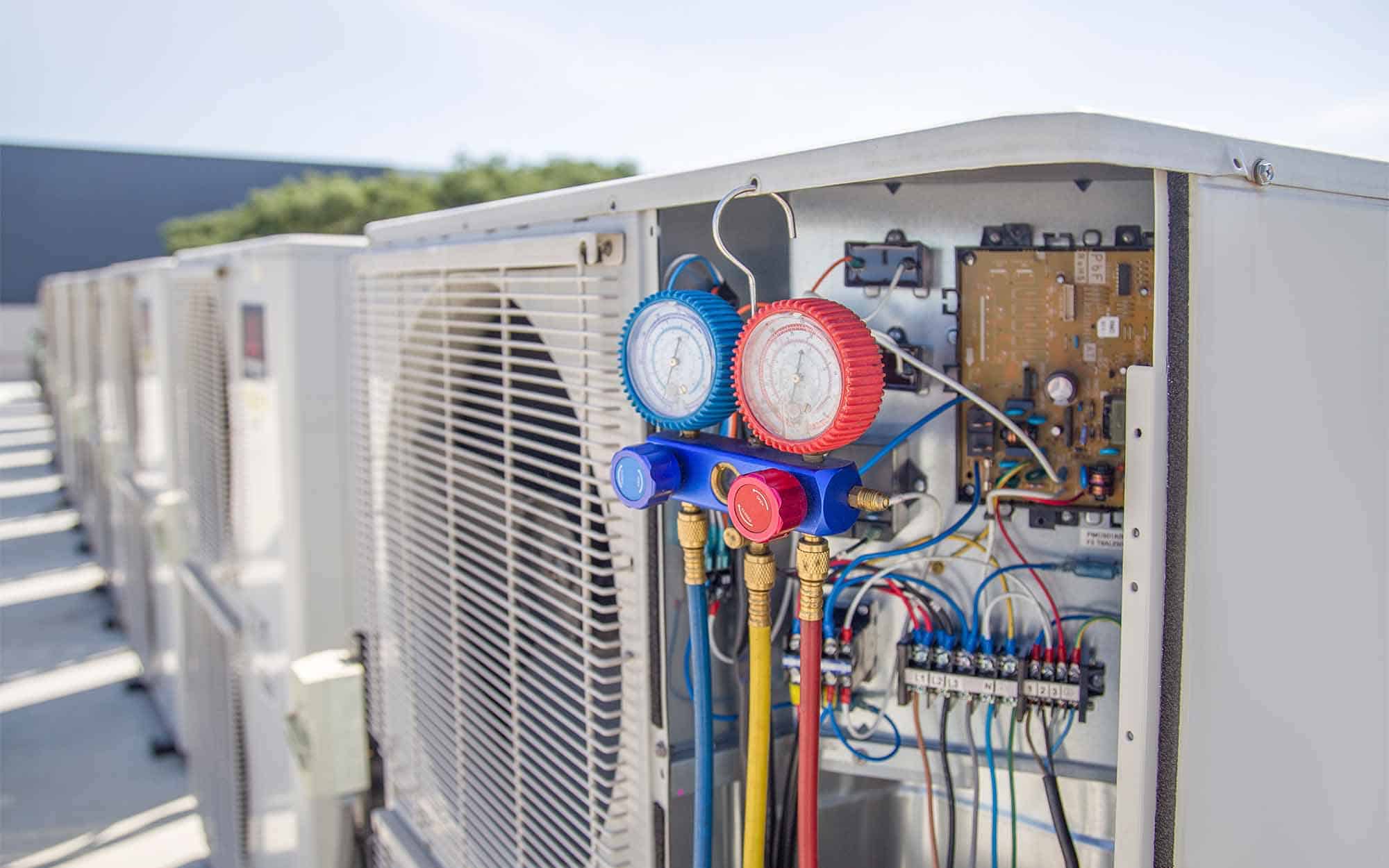How a Heat Pump and Heater Collaborate to Enhance Your Home's Home heating Effectiveness
Comprehending exactly how a heatpump and furnace collaborate is vital for home owners seeking reliable heating remedies. Each system has its staminas, supplying a well balanced technique to home comfort. The heat pump excels in moderate temperature levels, while the furnace provides fast heat during severe cold. This harmony not just decreases power prices however also boosts the life-span of both home appliances. What variables influence this collaboration, and how can home owners maximize their benefits?
Comprehending Warm Pumps: Just How They Work
Several people might be unknown with their internal functions, warm pumps play a vital role in modern-day heating systems. These devices run by transferring warm from one area to another, using the concepts of thermodynamics. In cooler months, a warmth pump essences heat from the outside air, ground, or water, and transfers it indoors to warm up the living space. Conversely, throughout warmer months, it can turn around the procedure, serving as an a/c unit by removing heat from inside to the outside.Heat pumps contain an evaporator, condenser, expansion, and compressor valve. The refrigerant within the system absorbs heat as it evaporates at reduced temperature levels and pressures. The compressor then increases the stress and temperature of the cooling agent, allowing it to release heat as it condenses. This effective process can considerably reduce power intake contrasted to typical home heating methods, making heat pumps a sustainable choice for environment control in homes.
The Role of Heating Systems in Home Heating
Heaters play a crucial duty in home heating by giving a dependable resource of heat during the chillier months. They operate by generating warm through combustion or electrical resistance, distributing it throughout the home using air ducts or radiant systems. The performance of a heater is usually gauged by its Yearly Gas Usage Performance (AFUE) score, which shows how effectively the system transforms gas into heat.Furnaces can utilize numerous power resources, including all-natural gas, electrical energy, propane, or oil, permitting property owners to select one of the most appropriate option for their demands. Unlike heatpump, which may have a hard time in extreme cold, heaters keep constant efficiency, guaranteeing that interior temperature levels stay comfy despite outdoor problems. Additionally, contemporary heaters typically come outfitted with advanced innovation, such as variable-speed blowers and clever thermostats, enhancing their effectiveness and responsiveness. This flexibility makes furnaces an essential component in all-inclusive home heating methods.

Advantages of Using Both Equipments With Each Other
Integrating the toughness of both furnaces and heatpump can bring about a more efficient and reliable home heating remedy. Using both systems enables homeowners to benefit from the heatpump's power effectiveness throughout milder temperature levels while counting on the heater for even more severe cold problems. This dual technique can substantially reduce energy prices, as heat pumps take in much less electrical energy than typical heating methods when temperatures are moderate.Additionally, making use of both systems together can enhance comfort degrees in the home. Heatpump can offer regular, also heating, while furnaces can rapidly raise ambient temperature levels when required. The combination of both systems can extend the life expectancy of devices by minimizing wear and tear on each system, as they share the work. Ultimately, home owners can appreciate a well balanced, cost-efficient home heating remedy that readjusts flawlessly to differing weather problems, making certain a cozy and welcoming home throughout the cold weather.
Just How Warm Pumps and Furnaces Complement Each Various Other
They develop a complementary heating system that optimizes performance and comfort when homeowners incorporate heat pumps and furnaces. Heat pumps run by transferring warm from the outside air or ground, making them highly effective in modest environments. They stand out during milder temperature levels, supplying cost-effective home heating. On the other hand, heaters create warm through burning or electrical resistance, supplying solid, prompt heat during severe cool conditions.The mix of these 2 systems permits dynamic modifications based upon temperature changes. During warmer months or milder winter months days, the warmth pump can take the lead, saving energy and lowering expenses. As temperatures decrease, the heating system can perfectly engage, guaranteeing constant heat throughout the home. This synergy not just enhances energy use yet additionally improves the life-span of both systems, as each unit operates within its excellent efficiency variety. With each other, they develop a well balanced environment that adapts to varying climate needs.
Enhancing Performance: Tips for Homeowners
House owners can enhance their heating efficiency through numerous practical strategies. Developing a normal upkeep routine, integrating wise thermostat modern technology, and applying efficient insulation and securing options are crucial actions. These actions not just boost comfort but likewise decrease energy costs.
Regular Upkeep Arrange
To assure maximum heating effectiveness, establishing a normal maintenance schedule is vital for any home. Property owners need to focus on regular evaluations of both heatpump and heating systems to establish peak efficiency. This includes altering air filters each to 3 months, as blocked filters can substantially minimize effectiveness. Additionally, organizing expert maintenance at least yearly permits specialists to identify and address potential problems before they escalate. Home owners need to additionally clean the heatpump's outside system to stop debris buildup that can hinder air movement. By sticking to a regular maintenance timetable, homeowners not only enhance their home heating systems' effectiveness yet also extend their lifespan, causing better convenience and lowered energy prices throughout the chillier months.
Smart Thermostat Combination
Incorporating a clever thermostat right into a home heating unit can significantly boost energy efficiency, specifically as it enables exact control over temperature settings. These tools can click over here now discover the home owner's timetable and choices, automatically readjusting the temperature to optimize convenience while decreasing energy use. They can lower home heating throughout times when the home is unoccupied, lowering unneeded consumption. Several clever thermostats likewise give real-time energy usage data, making it possible for house owners to make informed decisions about their home heating habits. Furthermore, remote access by means of smartphone apps permits look here customers to adjust setups from anywhere, ensuring the home is warm upon return. Overall, clever thermostat combination not just improves convenience however considerably contributes to power savings and effectiveness.
Insulation and Securing Solutions
Smart thermostats play a vital role in power effectiveness, yet their performance can be significantly improved by appropriate insulation and securing solutions. Property owners must focus on insulating attic rooms, floorings, and walls to reduce warmth loss. High-quality insulation materials, such as spray foam or fiberglass, can considerably boost thermal resistance. Additionally, sealing gaps around ducts, windows, and doors avoids cool air seepage and warmth retreat. Weatherstripping and caulking work approaches for resolving these leakages - furnace replacement. Routine assessments for air leakages, in addition to making use of blower door tests, can assist identify problem areas. By buying insulation and securing, homeowners can enhance the efficiency of their heating systems, inevitably bring about lowered energy intake and reduced energy costs
Typical Myths About Warmth Pumps and Furnaces
What misconceptions border heatpump and heaters? Many people erroneously think that heatpump are inadequate in chillier climates. In truth, modern-day heatpump are created to operate efficiently also in reduced temperatures, offering dependable home heating throughout winter months. An additional typical misconception is that heating systems are always much more efficient than heatpump. Nevertheless, this relies on the specific power sources and performance ratings of the devices concerned. Some may likewise believe that utilizing both systems at the same time is unneeded, but actually, this mix can optimize heating performance, particularly during severe climate condition. In addition, individuals commonly think that heatpump call for constant maintenance, when actually, they have similar upkeep requires to standard heater. By debunking these myths, homeowners can make more educated choices concerning their heating alternatives, ultimately causing boosted comfort and power efficiency in their homes.
Maintenance Considerations for Combined Solutions

Frequently Asked Concerns
Can Warm Pumps Job Properly in Incredibly Cold Climates?
Heatpump can struggle in extremely cold climates due to decreased effectiveness and warmth removal limitations. Nevertheless, innovations in innovation have actually led to models developed for much better performance in such problems, improving their stability in rough environments.
Just How Long Do Warm Pumps and Furnaces Typically Last?
Heatpump normally last 15 to twenty years, while heating systems have a lifespan of 15 to 30 years. Normal upkeep can expand their long life, ensuring efficient procedure and lowering the requirement for early substitutes.

What Is the Average Cost of Setting Up Both Solutions?
The average price of setting up both a heat pump and a heating system usually varies between $5,000 to $10,000 - furnace replacement. Factors influencing this price consist of system size, setup intricacy, and regional labor rates
Exist Tax Obligation Incentives for Using Energy-Efficient Heating Systems?
Numerous house owners make inquiries regarding tax obligation motivations for energy-efficient heater. Numerous government and state programs often use credit histories or discounts, encouraging the fostering of lasting modern technologies to reduce energy intake and promote environmental obligation.
Exactly how Do I Select the Right Dimension Heatpump and Furnace?
Selecting the best size warmth pump and furnace involves determining the home's square video footage, thinking about insulation high quality, and assessing local climate. Consulting an expert can ensure suitable system efficiency and power performance based upon certain needs. heat pump installation ooltewah tn. Understanding just how a warmth pump and heating system work with each other is necessary for property owners seeking effective home heating options. In chillier months, a warm pump essences heat from the outdoors air, ground, or water, and transfers it inside to heat the living room. When house owners integrate heat pumps and heaters, they produce a complementary heating system that makes the most of efficiency and convenience. Heat pumps run by transferring warmth from the outside air or ground, making them very efficient in modest climates. Warm pumps can battle in very cool environments due to decreased efficiency and warmth extraction constraints